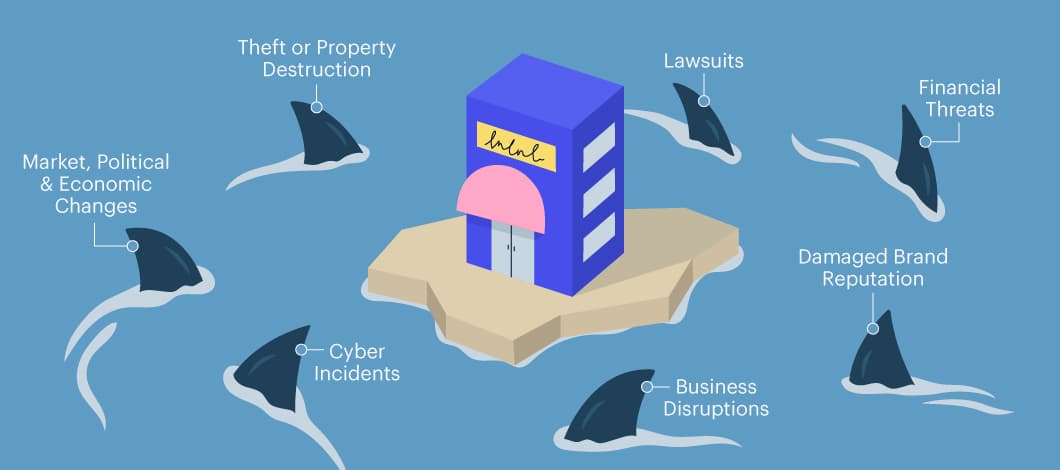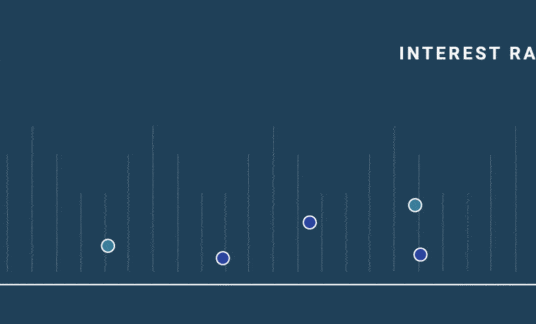We’re all well aware that the pandemic has increased business risks around the world – from business closures to health-care issues to remote work environments, among others.
But what other factors put a company at risk? Here’s what you need to know.
What Is Business Risk?
Business risk refers to a company’s potential for loss, damage, hazard or injury.
There can be both internal and external risks in business. Internal risks arise from employees or company partners, for example, while external risks could run the gamut from environmental conditions to legal action taken against the company.
7 Business Risk Examples
Here are a few key business risks entrepreneurs should keep in mind, whether they’re experienced or just starting out.
1. Financial Threats
One risk entrepreneurs face is financial, whether funding a new business, keeping an existing one going or scaling operations. Lack of revenue, diminished working capital and excessive debt are all threats.
Scott Williams, founder of MobileOfficeSales says, “Finances play a significant role in the success or failure of any business.”
He says entrepreneurs need to make sure they’re accurately calculating their costs so they have enough capital to run the business and cover day-to-day expenses.
“Proper cash flow allocations and income projections should be performed prior to launching a business,” says Williams.
He says small business owners must understand what they need to bring into the business, whether money from personal savings, funds from a loan or another source.
Joe Whiteside, co-founder of Honey & Roses Coffee Co., notes the importance of cash flow for inventory, if applicable, even for a company with very limited products.
“Purchasing any inventory from a manufacturer often has significant minimum order quantities and lengthy lead times to receipt,” Whiteside says. “Put simply, this means a company has to lay out tens of thousands [of dollars] months before sales are made.”
“To a small company, particularly one that is self-financed, that is not an insignificant challenge,” Whiteside says.
He says for young companies it can be particularly challenging to predict sales patterns.
Additionally, Williams says, “The key to managing the liquidity bottlenecks is to use the data you have available.” He recommends seeking appropriate financing options, such as sale on consignment, manufacturer credit or debt financing.
“Failure to properly plan may result in bankruptcy and the closure of the business,” he says.
2. Lawsuits
Whether a customer initiates a business lawsuit thanks to a slip and fall on your property or an employee decides to sue you for unfair workplace practices, legal claims are a very real risk for business owners. Injuries, human resource benefit errors, discrimination, harassment and more can open you up to litigation.
According to data cited by Statista in which businesses were polled, in the previous 12 months from the time surveyed:
- 21% had no lawsuits filed against them
- 31% had 1-5 lawsuits filed against them
- 21% had 6-20 lawsuits filed against them
- 27% had more than 21 lawsuits filed against them
3. Cyber Incidents
Not only do businesses need to keep their data and systems safe, they have a responsibility to ensure the privacy and protection of their clients’ and employees’ information.
While cybersecurity has been a concern for many businesses in the past, thanks to the pandemic, that concern has only intensified.
Not surprisingly, cyber incidents are the No. 3 risk for businesses globally, according to the 2021 Allianz Risk Barometer.
Businesses should be investing in cyber protection as well as training employees on internet security. With many employers considering maintaining a remote or hybrid workforce post-pandemic, the risk for online breaches is very real.
Examples of potential cyber incidents include the following:
- Cyber crime
- Ransomware
- Employee errors
- Fines and penalties
- Hacker attack
- Data or security breaches
- Email spoofing and phishing
- Technology outages and disruptions
4. Damaged Brand Reputation
Paige Arnof-Fenn, founder and chief executive officer (CEO) of marketing and branding firm Mavens & Moguls, says that for small businesses that rely on referrals and word-of-mouth marketing, having a good online reputation is incredibly important to building a strong brand.
“I recommend you know what digital dirt exists on you,” says Arnof-Fenn. To avoid being blindsided, she suggests performing a Google search and social media audit to see what comes up.
“Make sure all your posts and any influencers you work with have been checked thoroughly for inappropriate content or you risk diluting or destroying the brand equity and trust built over time,” she adds.
On the flip side, Ann Martin, director of operations at Credit Donkey Investments, notes: “Entrepreneurs are often the face of their brand, for better or worse. Any scandal, lawsuit, product recall or other reputation-damaging event that hurts the company will hurt you too. They can also follow you throughout your professional life.”
5. Market, Political and Economic Changes
According to the Allianz Risk Barometer report, 19% of those surveyed indicated that market developments and changes in legislation and regulations were the business risks they were most concerned about.
Examples include the following:
- Tariffs
- Trade wars
- Volatile markets
- Shifts in political power
- Increased competition
- Market fluctuations
- Economic sanctions
- Rise in technology
- Political unrest and instability
If you’re starting a new business, research the laws and regulations where you’ll be operating and ensure you’re in compliance. Also, perform market research. Keep an eye on competitors’ strategies, industry changes and other factors that could have an impact on your business.
6. Theft or Property Destruction
Another risk for a new business or an existing one is the loss of property, whether through thievery, looting or vandalism. And this doesn’t only have to be external; consider that employees could potentially be a risk in this regard too.
Additionally, “natural disasters like floods, earthquakes, and tornados — or global pandemics — can disrupt your supply chain, shut down your stores and seriously impact your bottom line,” says Yuvi Alpert, founder, CEO and creative director of Noémie, a fine jewelry brand.
Additionally, in some industries, the potential for explosions is another factor to consider.
In fact, 17% of respondents surveyed for the Allianz Risk Barometer report noted natural catastrophes were among the most feared business risk, while 16% noted fire or explosion.
“While there’s no way to predict when these physical risks will hit, companies should always have an emergency plan prepared ahead of time,” Alpert says. “Prevention isn’t fully possible, but preparation is.”
7. Business Disruptions
While business disruptions aren’t new, COVID-19 shined a light on this type of risk. Not surprising, it was the No. 1 business risk in the U.S. and throughout the world, according to the Allianz Risk Barometer. Specifically, 41% of global respondents agreed.
The report notes, “The pandemic shows companies need to prepare for a wider range of business interruption triggers and extreme events than previously. Building greater resilience in supply chains and business models will be critical for managing future exposures.”
In terms of risk, business interruption isn’t limited to supply chain disruptions. It also can refer to physical damage that halts business operations.

How to Manage Risk in Business
Now that you’re aware of several common risks of starting a small business, you can work on strategies to avoid them or lessen their impact if they do occur. You also might consider putting a risk management team in place to help you in this regard.
-
Risk Management Plan Example for Businesses
If you’d like to put together a risk management plan, here’s an example you could mirror. Here is another sample template from the Library of Congress. Additionally, a quick Google search will also return several examples to which you can refer.
Items addressed in a risk management plan could include the following:
- Probability of occurrence
- Risk impact
- Risk score
- Roles and responsibilities of team members
- Risk response planning
Additionally, in many cases, business lawsuit insurance is available to entrepreneurs to mitigate common risks. There are many different types of business insurance policies available, including the following:
- General liability insurance
- Worker compensation insurance
- Employer liability insurance
- Product liability insurance
- Professional liability insurance
- Employment practices liability insurance
- Cyber liability insurance
- Business owner’s policy
- Business interruption insurance











